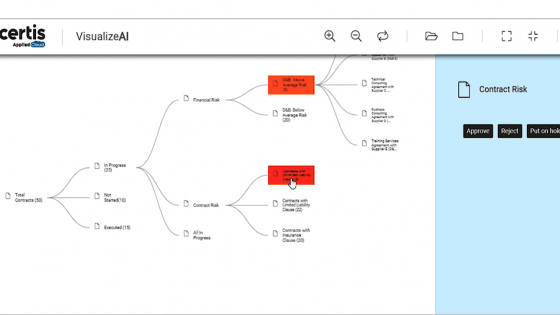NTT Ltd., a world-leading global technology services provider, has revealed the findings of its annual Global Customer Experience Benchmarking Report titled “The Connected Customer: Delivering an effortless experience.” According to the research, only 12% of Asia Pacific organizations are delivering a fully functioning experience, yet more than half (64%) consider customer experience (CX) to be a primary differentiator.
Organizations struggle to align their CX strategies to the voice of customer (VoC) feedback, with 54% having no formal process for considering this data and 19% which capture no feedback at all. Only 34% fully define and track the value contribution of CX and roughly a third (34%) are able to connect data relationships between channels – leaving the rest operating ‘blind’ with no full view of the customer ecosystem. That said, across the globe, the collection of VoC feedback by organizations is improving with a 45% improvement since 2019 in those capturing some form of feedback and 10% now perceive their VoC program to be at an advanced level across all channels.
“Customer expectations are higher than ever – businesses cannot afford to fail in CX,” said Pranay Anand, Asia Pacific Director, Intelligent Workplace for NTT Ltd. “By listening to the voice of the customer, integrating data across systems, in addition to adopting emerging technologies like AI and RPA, companies can leverage CX to gain a competitive advantage. However, most companies are missing valuable insights that are integral to staying relevant to and better connect with customers across every touchpoint.”
Listening starts with strategy
A successful CX strategy is proven to improve customer and brand engagement and drive commercial performance. Yet many organizations are still stuck in the developmental stage due to siloed technology systems, inconsistencies in experience and a lack of clear processes. Specifically, the challenges include:
Faltering technology systems: One in five (20%) say their technology systems are failing to meet current needs and many teams still struggle with legacy systems (42%) and the integration of multiple technology systems (43%). Additionally, the inability to secure budgets (48%) remains a concern and skills shortages are seen as a growing concern (26%).
Siloed channels and internal business organizations: Half (51%) of organizations agree there is an only partial collaboration between functions when it comes to designing CX, and 13% don’t collaborate at all. Less than two thirds (60%) still have no cross-channel contact management strategy and 30% claim to have good or complete consistency across contact channels.
Inconsistent priorities: Personalization capabilities have surged from 62% to 78% in one year, but just 17% of organizations place “customer delight” as the top driving force behind their customer journey design strategy. This may account for why over one third (44%) of assisted services enquiries fail to be resolved during the first contact, while automated channels fare worse with a 57% fail rate.
Creating a smarter CX with data analytics
While more than three quarters (77%) of organizations indicate that they are satisfied with their customer satisfaction capability, only 17% of their customers rate customer experience at ‘advocacy’ level. Worryingly, just 11% of AI and robotics users say customers rate their experience at the advocacy level, exposing the gap between emerging technologies and satisfaction levels.
This demonstrates that businesses need to create a smart strategy which bases AI on optimum data. Organizations must learn to fill the gap between data management and integration, and prioritize an efficient data management platform. As it stands, only half (50%) of data capture needs are defined and aligned to desired business outcomes, and just 20% have a dedicated team managing the company’s entire data lake. In fact, 15% have no data management strategy at all. Because of this, data is becoming increasingly difficult to manage. Half (50%) of all teams are evaluating and learning how to use available data and 22% do not have the required data management skills or resources to do so.
An increasing number of organizations are moving towards the use of smart data to inform CX decisions but are often overwhelmed by this transformation. Half of the businesses confirmed data analytics and data management will be one of the top three tech initiatives prioritized by the CX team. Analytics (59%) is expected to be the top factor in reshaping the CX industry within the next five years. This is closely followed by artificial intelligence (57%), service personalization (38%) and technology integration (37%).
Overcoming business organizational structure challenges
Many organizations believe AI and automation is the future for creating operational efficiency, hyper-personalization and providing an effortless customer experience. The majority (71%) of businesses believe customer operations will be positively affected by AI and CX robotics. Rules-based robotic solutions “are the preferred option both now and in the short term with AI being the top five-year priority.” However, the implementation of AI remains difficult. Looking forward, businesses must find a solution for the current lack of skills across the business, which is currently considered a challenge for more than half (59%) of organizations today.
“Businesses must look at how technologies such as AI and RPA can work as part of their organizational team structures,” said Anand. “But to do this successfully, AI needs to work with the voice of the customer data which is collected by advanced social listening tools. This data must also be compiled from across the business’s value chain in order to help AI realize its potential. Therefore, design thinking and an ecosystem focused approach are imperative.”
Find out more here.
Do you have an article, infographic, podcast, presentation slides, press release or a key individual from your organisation that you'd like to highlight on Marketing In Asia? Head on over to Upload Your Content for more info.



















